Menu
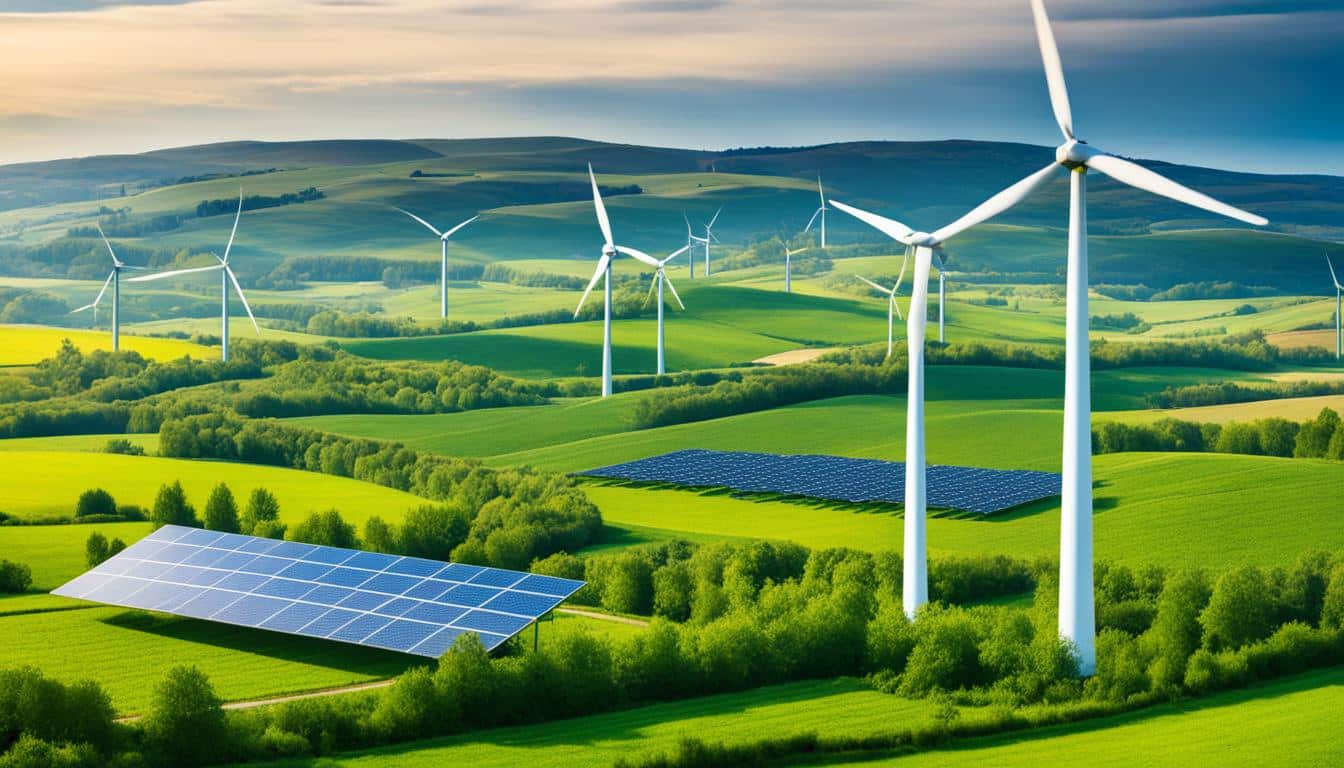
In Valencia, Spain, over 600 people met at the European Carbon Farming Summit in March 2024. This event was a big step in promoting carbon farming. It’s seen as a key approach to making agriculture more sustainable and fighting climate change.
The summit focused on how carbon farming can help both the planet and farming activities. A major highlight was the CREDIBLE project. This project pushes for a complete approach to carbon farming. It aligns farming practices with the EU’s zero emissions target by 2050. This means carbon farming is becoming more important for the future of farming.
Carbon farming is key in sustainable agriculture. It focuses on improving carbon sequestration in plants and soil. This helps combat climate change while boosting soil health and using methods that are good for the environment. Traditional knowledge mixed with new techniques is vital to meet carbon standards well.
Carbon farming boosts the amount of carbon in soil and plants through farm methods. This reduces harmful carbon in the air and makes soil healthier. Techniques like no-tillage and planting cover crops are used to do this. But, they must be done regularly to keep working. If not, the stored carbon might go back into the air.
Carbon farming is crucial in today’s agriculture as it helps meet the EU’s climate goals. Yet, challenges like ‘non-permanence’ can be a problem. This means extra carbon can be released if farming methods change. Other issues include how fair and how well we measure the impact of carbon farming.
The food and drink industry show a big interest in buying carbon credits from farms. Companies are willing to pay between $5 and $60 for every ton of carbon they save. This is great news for farmers as it can become a way to make money. Once more companies start to price carbon, the need for regenerative practices will grow.
| Aspect | Challenge | Opportunity |
|---|---|---|
| Non-permanence | Release of increased carbon content if practices stop | Consistent application to ensure sequestration |
| Additionality | Proving sequestration without incentives | Financial incentives to ensure additionality |
| Leakage | Redistribution of organic material | Better management practices |
Bringing together old and new farming techniques creates a future where farming supports climate goals. This makes our farms stronger, greener, and better for tomorrow.
Carbon sequestration is vital in fighting climate change. It involves capturing carbon naturally through methods like cover cropping and agroforestry. These practices do more than lower CO2 levels. They also make soil healthier, supporting better farming methods.
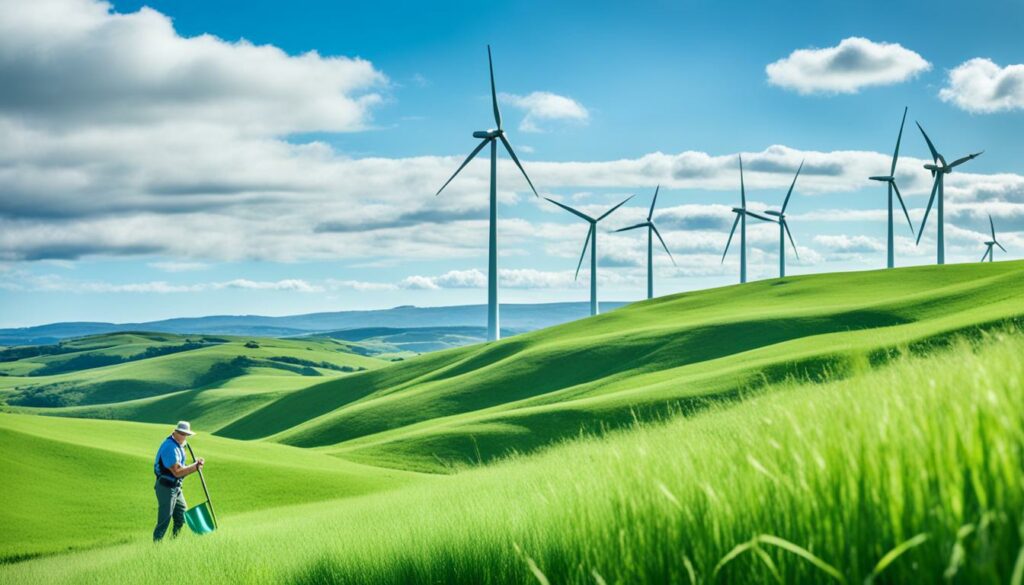
Carbon sequestration captures CO2 and keeps it in soil or plants. Cover cropping boosts soil quality and holds more water. No-till farming prevents erosion, which keeps carbon in the soil.
New farming tech boosts how well we can sequester carbon. This includes using precise farming methods and biochar. Agroforestry not only stores carbon but increases biodiversity too.
Enhancing soil health is key for better farming. Methods like composting and adding biochar help a lot. Having more trees and deep-rooted plants improves soil and stores more carbon.
This boosts farming’s resilience and sustainability. These methods make agriculture better for the planet and more productive.
| Practice | Impact |
|---|---|
| Cover Cropping | Increases soil fertility and enhances water retention. |
| No-Till Farming | Reduces soil disruption and erosion. |
| Agroforestry | Helps sequester carbon and enhances biodiversity. |
| Alley Cropping | Maximises land use efficiency and promotes carbon sequestration. |
| Silvopasture | Increases biomass and root development. |
| Perennial Crops | Establish deep root systems for better carbon storage. |
| Perennial Grains | Improve soil health and sequester carbon effectively. |
| Perennial Forages | Enhance soil fertility and carbon storage. |
It’s key to know the many carbon farming practices in use today. They help make agriculture sustainable and move us closer to carbon neutral.
Different carbon farming strategies work to reduce emissions. For example, managing peatlands helps these eco-systems thrive. This is vital for storing carbon. Also, controlling nutrients on farmlands supports carbon sequestration efforts. It blends farming with ecological goals, making it good for the planet.
There are great stories showing how carbon farming works. In California, by 2030, farms could store over 60 million metric tons of carbon dioxide every year. This proves the big role of carbon neutral farming in fighting climate change.
Moreover, the European Carbon Farming Summit emphasised learning from each other. Farmers sharing their experiences can help everyone. It brings the best strategies to all kinds of farming in Europe.
Carbon farming has a bright future ahead. It’s making agriculture more sustainable through new technology, community efforts, and financial backing. The first European Carbon Farming Summit in Valencia, Spain, saw over 600 people join. This shows a fast growth in interest for future carbon farming strategies.
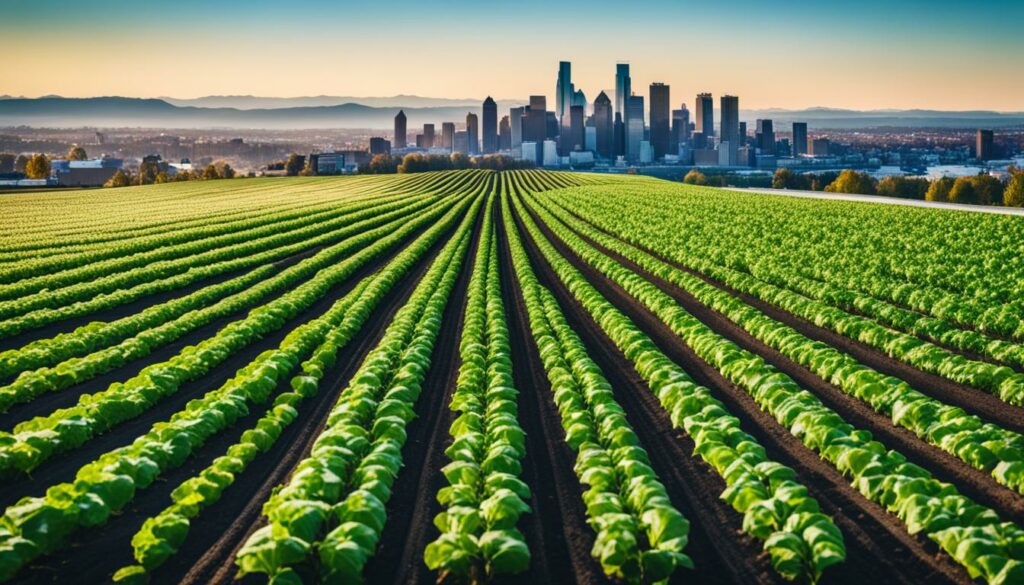
At the summit, the EU shared the Carbon Removal Certification Framework. It wants to hit net-zero emissions by 2050. This plan will make sure that removing carbon from the air meets set standards. It aims to keep things clear and honest by certifying these methods properly.
The focus was also on farmers at the summit. They’re seen as key in making carbon storage and emission cuts happen. By using regenerative farming that fits their area, they can share tips and work together. This boosts the success of efforts to store carbon and cut down emissions.
Key to making big changes in carbon farming is having strong policies, teaming up with others, and using the right methods to measure our impact.
By 2030, farms and ranches in California might trap over 60 million metric tons of carbon every year. This is a big win against climate change. They earn by selling carbon credits, which are about $15 each now. This helps cover the cost of making their farms environmentally friendly.
Looking ahead, working together with new ideas from the summit can strengthen carbon farming. It hopes to be a major part of the solution to fight climate change, mostly by using regenerative farming.
Carbon farming could change the game for sustainable farming. It helps fight climate change, boosts biodiversity, and offers economic benefits.
Sustainable farming, such as using cover crops and avoiding tillage, is key to fighting climate change. These methods improve the soil and trap carbon. Cover crops make the soil healthier. No-till farming stops soil from being harmed. These are important green farming practices.
When we add carbon farming to agriculture, we bring in more life. Agroforestry mixes trees with farming, which is really good for both biodiversity and trapping carbon. Plants like Kernza, with deep roots, store a lot of carbon and make the soil better. This way, farming can withstand challenges and help the environment stay healthy.
The money benefits of carbon farming are huge. Methods like making compost and using biochar make the soil richer. This leads to better crops and saves money on farm inputs. Also, farmers can earn money from their carbon-saving efforts. This makes green farming not only good for the planet but also good for the pocket.
Below is a snapshot highlighting some key statistics pertaining to carbon farming and its impact:
| Practice | Benefits |
|---|---|
| Cover Cropping | Enhances soil fertility, contributes to carbon sequestration |
| No-Till Farming | Maintains soil integrity, aligns with carbon farming |
| Agroforestry | Promotes biodiversity, enhances carbon sequestration |
| Perennial Crops (e.g., Kernza) | Improves soil health, significant carbon sequestration |
| Composting and Biochar Application | Increases soil organic matter, enhances soil fertility and carbon storage capacity |
Regenerative agriculture is crucial in carbon farming. Its goal is not just to reduce harm. It also seeks to restore ecosystems actively. This is vital for soil regeneration. It requires constant innovation and the use of sustainable farming methods.
Currently, our use of farming and forestry produces a big share of the world’s greenhouse gases. It’s also the cause of nearly 10% of the carbon in the US. So, it’s key to use carbon neutral practices in farming. We aim to create a strong, long-lasting agriculture that lives in harmony with nature through regenerative farming methods.
Big companies are making moves to help in this transformation. For example, Bayer is working with about 1.5 million acres worldwide in sustainable farming. Most of this is in the US. These projects pay farmers for using methods like less ploughing and growing cover crops. These are key for soil regeneration.
Cargill is also doing its part with the RegenConnect™. They are now paying farmers in parts of Europe. This is for choosing regenerative farming. They plan to work in more US states too. This response meets a growing demand for carbon neutral practices and the related carbon credits market, which could be worth over $50 billion by 2030.
Here is an overview of their work:
| Company | Programme | Region | Practices |
|---|---|---|---|
| Bayer | Sustainable Agriculture Programs | Global (primarily USA) | Reduced tillage, Cover crops |
| Cargill | RegenConnect™ | Europe & USA | Regenerative farming methods |
Furthermore, the food and drink industry makes up 57% of the possible demand for carbon credits on farmlands. This shows a strong interest in products from sustainable farming methods. By supporting these actions, we can make a big dent in cutting world GHG levels. We also pave the way for a green future in farming.
When we look at implementing carbon farming, we have to spot and solve many challenges. These hurdles exist in the financial, regulatory, and technical worlds. We need to work together and think outside the box to get over them.
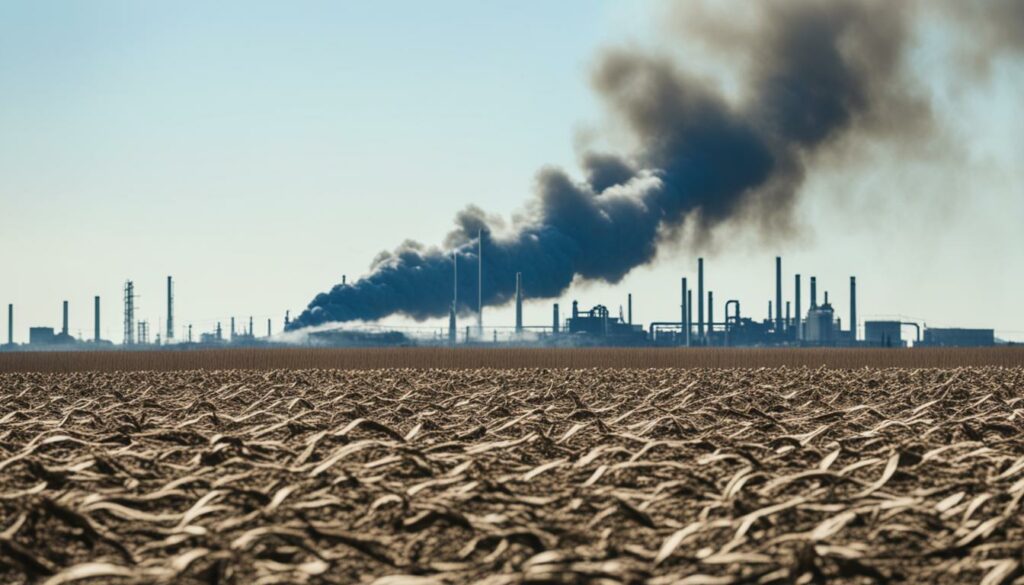
Concerns about ‘additionality’ on the voluntary carbon market are a big deal. Projects must show that they wouldn’t have captured CO2 without extra funds, like those from certificates. Proving this can be hard and costly, scaring off investors. Also, not enough money for new ideas makes it tough for farmers to start and keep up with carbon farming.
The rules are a big challenge too. Checking soil carbon levels isn’t always accurate, which messes up the standards for carbon credits in private schemes. This issue makes it hard for farmers to understand what they need to do. Plus, it can seem unfair when farmers who have been eco-friendly for a while get less from the carbon farming schemes.
There are a lot of tech problems in carbon farming. ‘Leakage’ is a big one, as moving organic matter can spread carbon differently, not store more. Also, the carbon stored could be lost if farming methods change, which isn’t good for removing CO2 from the air.
But, there are some ideas for tech solutions. For example, no-till and conservation tillage are good practices. They work well in many places, increasing carbon storage. If we use these methods across the U.S., we could store a lot more carbon, like taking lots of cars off the road.
Lastly, using better computer models and learning from the best worldwide is key. This can make measuring carbon storage more accurate. It helps push for more carbon farming, making it more likely to succeed.
Policy and legislation greatly help in the success of carbon farming. The EU’s Carbon Removal Certification is a key example. It ensures activities aimed at removing carbon align with the EU’s goal of no net emissions by 2050. This creates rules for counting carbon, making sure it’s genuine, stored for a long time, and sustainable. This builds trust in the market for carbon credits.
The EU’s framework makes sure methods to remove carbon meet high standards. This makes carbon credits honest and trusted worldwide. It was adopted in November 2022, showing Europe’s commitment to unifying rules in farming. This move helps make carbon offsetting consistent and effective in all EU countries.
Government support boosts carbon farming. The 2023 Consolidated Appropriations Act and the Inflation Reduction Act provide a lot of funding. They give $300 million for carbon farming and $20 billion for conservation over five years. Another important act is the Growing Climate Solutions Act. It helps farmers sell carbon credits by ensuring a fair process is in place.
Since 2023, there’s been a big increase in farmers wanting financial support for carbon farming. The USDA also started programs in August 2023 to help more farmers join the carbon market. This makes carbon farming more accessible, helping both small and large farmers. Such efforts are key to making carbon farming grow and supporting climate and sustainability goals.
Laws and support from different measures show large teamwork to boost carbon farming. By following these policies and getting financial help, agriculture can play a major role in fighting climate change.
Using new technology is essential in carbon farming. It changes how we store carbon, tracks data in farming better, and improves farming tech. At the European Carbon Farming Summit, experts from around Europe talked about the importance of tech to reach climate goals.
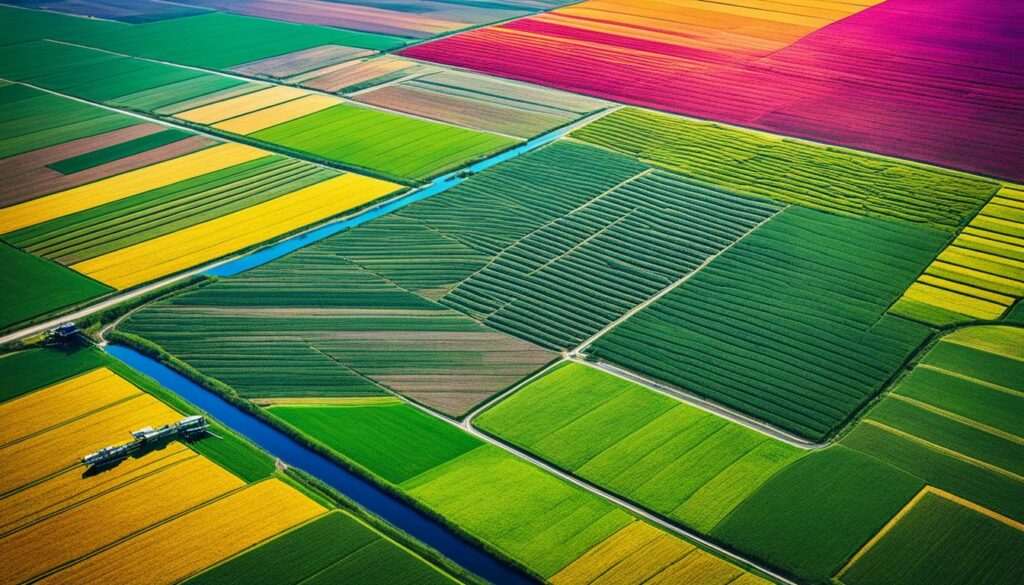
New tech in farming, like precision agriculture and drones, makes capturing carbon better. It’s more efficient and tracks carbon more accurately. The EU aims for zero net emissions by 2050, pushing for the use of these technologies. They ensure farming cuts down on harmful greenhouse gases (GHGs) effectively.
Financial help and custom strategies are also key for success.
Tracking farming data is crucial to see if efforts in carbon farming are working. Data collection tools help measure additional benefits like healthier soil and more biodiversity. Companies like SourceTrace and Syngenta Group lead in using data for better farming.
They make sure the carbon credits given are real by using advanced tools. This helps guarantee that efforts in reducing emissions and storing carbon are truly effective.
| Aspect | Statistics |
|---|---|
| Global Agricultural Contribution to GDP | 3% |
| Agriculture’s Share of Annual GHG Emissions | Up to 25% |
| Increase in CO2 Emissions Since 1970 | 90% |
| Digital Solutions Coverage by Syngenta Group | 125 million acres |
| SourceTrace’s Global Deployment | 37 countries across 4 continents |
The European Carbon Farming Summit is set for 5 to 7 March 2024 in Valencia, Spain. It will bring together farmers, policymakers, environmentalists, and tech experts. The goal is to work together and find ways to make European farming more sustainable.
The summit focuses on working together to make carbon farming more effective in fighting climate change. It’s key for all to share their farming methods to help everyone. This sharing can lead to bigger positive changes.
Commonland’s Founder, Willem Ferwerda, highlighted an important point. He mentioned the need to connect carbon farming with improving whole landscapes. This complete look is vital for a real and lasting green change. The summit also covered the value of healthy soil, ways to group farms together, and rules to make carbon farming bigger.
This event could greatly change how we tackle climate issues. Talks about setting EU-wide rules for certifying carbon removal suggest big progress. This would make carbon farming practices clearer and more efficient.
The meeting’s sharing of knowledge supports making real climate solutions. For example, the EU-funded CREDIBLE project shows how working together can create big change. The European Carbon Farming Summit is on the edge of important new steps. It can lead to vital changes and cooperation for a greener farming future.
The European Carbon Farming Summit aims to drive actionable solutions to combat the urgent challenges of European agriculture towards a sustainable future.
Helping farmers take charge is key for making carbon sequestration work. It includes helping them financially, teaching them, and making good policies. Nutrien is a great example. They’re helping farmers and aiming to cover 75 million acres with their Carbon Program by 2030. In 2023, they cut emissions on 900,000 green acres in North America.
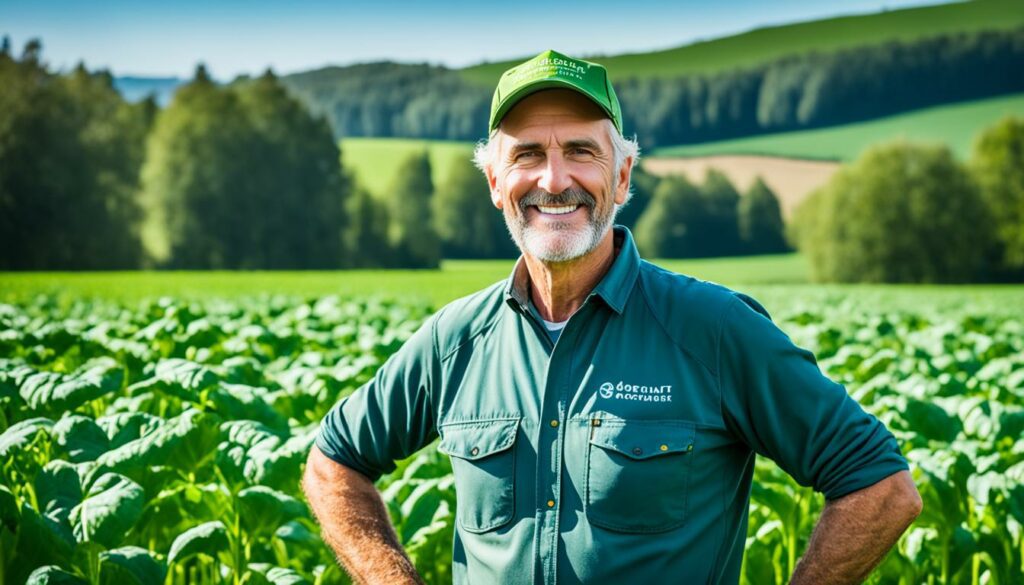
These efforts offer many benefits. In the US, improvements in handling nitrogen earned credits bought by the Royal Bank of Canada thanks to Nutrien. The Midwest’s Eco-Harvest Pilot Program is also worth noting. It showed good practices like managing nutrients, less tilling, and starting cover crops. These ideas are great for helping communities grow smarter in farming.
Canada is also benefiting from Nutrien’s work. They joined with Maple Leaf Foods under the Sustainable Nitrogen Outcomes program. This effort was confirmed to help reduce greenhouse gases with SustainCERT. By doing things like using compost, planting various cover crops, and managing grazing, they’re making the soil, more, healthier. This also helps nature grow better again.
There’s also a way to sell and buy carbon credits related to the earth keeping more carbon in the ground. Nutrien works with big names like BASF, PepsiCo, and Syngenta. Together they help make farming more sustainable.
By supporting farmers with strong networks and community-focused farming, we can fight climate change. This gives hope for a bright future for farms all over the world.
In today’s world, sustainable farming is growing fast. Farmers and others are looking closely at how they can get funding and make money with carbon farming. Having strong economic models is key. They help connect new carbon farming ideas with real actions on the farm.
Helping farmers get money for carbon farming is important. Both public and private funding can really make a difference. The money from selling carbon credits can make farms more profitable. This might push many farms to start capturing carbon.
When it comes to making money sustainably, several things matter. How much carbon gets stored, the price of carbon, and the costs to do all this count a lot. But there are extra gains too. Things like better soil and more farm productivity can add up to a bigger return on investment.
| Factor | Impact on ROI |
|---|---|
| Sequestration Rates | The more carbon a farm captures, the more money they can make from selling carbon credits. |
| Carbon Price Forward Estimates | A rising carbon price means the stored carbon on a farm is more valuable. This helps make more profit. |
| Establishment and Maintenance Costs | Starting costs and keeping the farm up and running are big factors for the farm to be profitable. |
Analysing the economics, we see a bright future for investing in carbon farming. This is if farmers can easily get the support they need. Investing in sustainable farming looks like it can actually make a good profit. Using accurate economic models can make a big difference. It can help carbon farming spread and bring big wins for our planet and our pockets worldwide.
Eco-friendly farming is key in today’s agriculture. It meets the vital need for climate action and respects nature. Environmental farming techniques have support from big groups like the California Air Resources Board. They want 20% of California’s farms to go organic by 2045, fighting climate change.
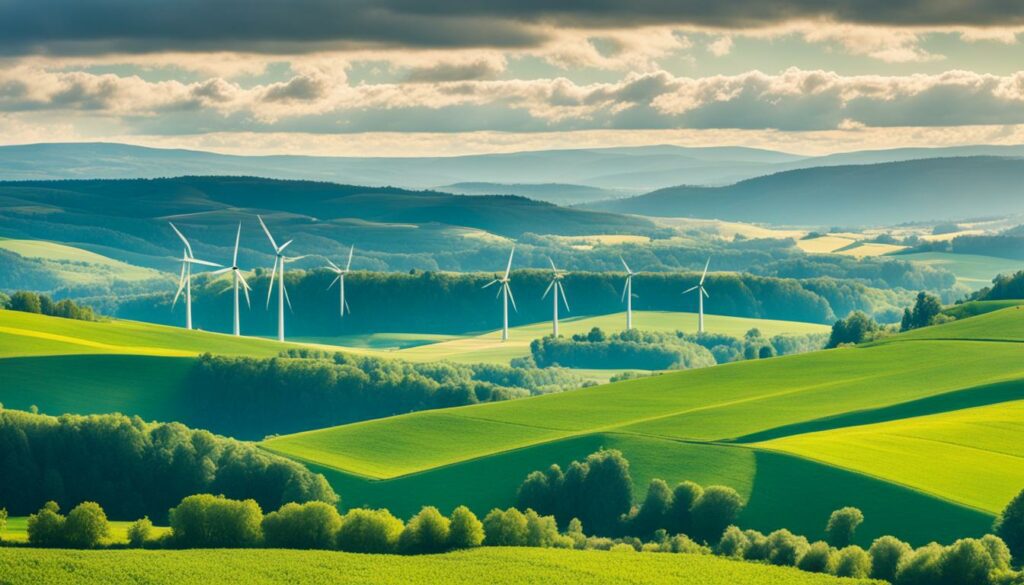
Organic farming is really growing in California. Between 2014 and 2019, the state’s organic land grew by 44%. This shows how effective eco-friendly methods are. They help the environment, economy, and nature.
The move away from synthetic nitrogens is important too. By going organic, global farm emissions could drop by around 20%. This is key in fighting climate change and building stronger, greener farms.
Also, the Rodale Institute found that organic farms use 45% less energy. This shows how important energy efficiency is. It lowers the farms’ impact on the environment and increases their long-term success.
Dealing with harmful pesticides is crucial. Some of these can spike N2O emissions up to 800%. This is why greener farming methods are so important. They reduce pollution and keep our ecosystem healthy.
Globally, adopting organic and diverse farming practices has great potential. It could more than balance out the world’s farm-grown emissions. This is a huge step in fighting climate change through smart farming.
Organic farming also stands strong against bad weather. In dry years, organic farms can grow 40% more food than others. This proves how well eco-friendly farming can cope with challenges.
Overall, going green in agriculture tackles climate change and cares for our planet. It’s our road to a sustainable future. This way, we fight back against the harm of climate change with fresh, smart farming.
We’ve explored carbon farming and seen its potential for big change in agriculture. This approach brings together policies, new tech, and support for farmers. It aims to reduce gases that harm our planet while also benefiting farmers and society.
Recent reports point out both opportunities and challenges in scaling up carbon farming. There’s a need for strong plans to meet the EU’s green goals. Different farms and places offer varying benefits in fighting climate change. This means we must carefully design our efforts to be most effective.
Funding for carbon farming can come from public and private sources. The EU is pushing agriculture to become more climate-friendly. Its upcoming ‘Carbon Farming Initiative’ plans to support farmers in removing carbon. This initiative is key to develop a clear system for verifying and supporting carbon farming activities.
In summary, carbon farming is a key player in fighting climate change. It combines efforts across different sectors to make a real impact. By working together, we can address climate issues and secure a better future for all.
Carbon farming aims to store more carbon in soils and plants. This cuts the amount of CO2 in the air and helps fight climate change.
It’s important because it deals with climate change and makes farming better. It uses green methods that boost soil health and grow more variety of plants.
Storing carbon in the soil makes it better. It makes soil hold more water, nutrients, and helps friendly soil bugs live there.
Agroforestry and using less soil tillage are good examples. Also, planting cover crops and managing peatlands. These methods help store more carbon.
Technology gives us tools to track and analyse data. This makes carbon farming more effective and trusted.
The summit showed that combining many strategies works best. It said technology, policies, and everyone working together make carbon farming succeed.
By offering financial help, training, and setting up good policies. This supports farmers in fighting climate change through carbon farming.
Farmers can make money via carbon credits. It boosts their farms’ strength against climate change and cuts their costs.
The main issues are money, rules, and measuring results. But with smart solutions, support, and enough funding, carbon farming can spread widely.
Policies create the rules and support needed for carbon farming. They make the carbon credit market fair and reliable.